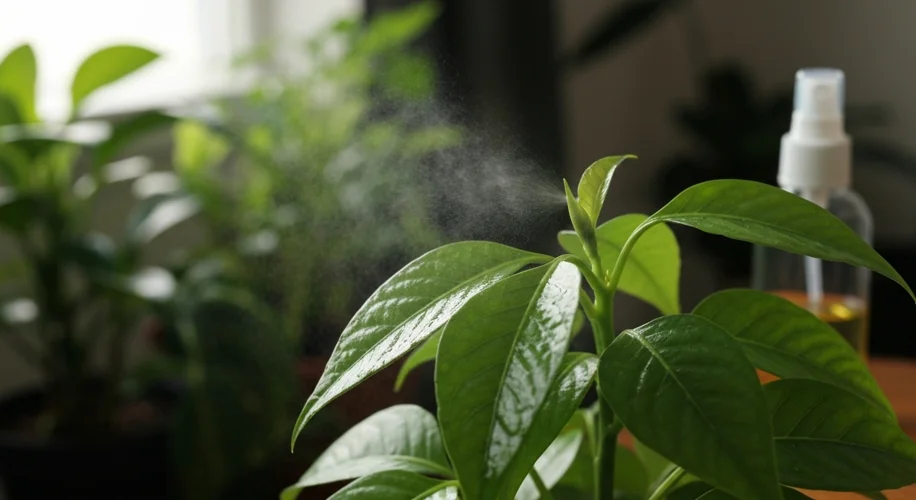Hey everyone, Elias here! If you’re anything like me, your houseplants are more than just decor; they’re little green companions that bring life and joy into our homes. But sometimes, these leafy friends can attract some unwelcome guests: pests.
Today, I want to talk about a natural solution that’s become a staple in my indoor jungle: neem oil. It’s a fantastic, plant-safe way to tackle common houseplant pests without resorting to harsh chemicals.
The Usual Suspects: Identifying Common Houseplant Pests
Before we dive into the solution, let’s learn to spot the culprits. Knowing what you’re dealing with makes treatment much easier.
- Aphids: These tiny, pear-shaped insects often cluster on new growth and the undersides of leaves. They can be green, black, brown, or even yellow. They suck the sap from your plants, weakening them.
- Spider Mites: Don’t let the name fool you; these are actually tiny arachnids. You might see fine webbing on your plants, especially between leaves and stems. They cause stippling (tiny dots) on leaves as they feed.
- Mealybugs: These look like small, cottony masses, often found in leaf axils or on stems. They also feed on plant sap and can excrete a sticky substance called honeydew, which can lead to sooty mold.
- Scale: These appear as small, hard bumps or waxy coverings on stems and leaves. Like aphids and mealybugs, they suck plant juices.
- Fungus Gnats: You’ll often see these small, dark flies hovering around the soil surface, especially after watering. While the adult flies are mostly a nuisance, their larvae live in the soil and can damage roots, particularly on seedlings.
Harnessing the Power of Neem Oil
Neem oil comes from the seeds of the neem tree and has been used for centuries as a natural pesticide. It works in a few ways: it can disrupt the insects’ feeding and growth cycles, and it also acts as a repellent.
How to Make and Use Your Neem Oil Spray:
It’s super simple to prepare. You’ll need:
- Cold-pressed neem oil: Make sure it’s pure, cold-pressed neem oil, not a synthetic imitation.
- Mild liquid soap: A few drops of pure castile soap or insecticidal soap work best. This helps the oil mix with water.
- Water: Warm water is ideal.
- Spray bottle: A clean, fine-mist spray bottle.
The Ratio: A good starting point is 1-2 teaspoons of neem oil and 1 teaspoon of mild soap per quart (about 1 liter) of warm water. Mix them thoroughly in your spray bottle.
Application Tips:
- Test First: Always do a spot test on a small area of a leaf a day or two before treating the whole plant. This ensures your plant doesn’t have a negative reaction.
- Spray Thoroughly: Cover all parts of the plant, especially the undersides of leaves and where you see pests. Pests love to hide!
- Timing is Key: Apply your neem oil spray in the early morning or late evening. Direct sunlight on wet, oily leaves can sometimes cause leaf scorch.
- Repeat if Necessary: For persistent infestations, you might need to reapply every 7-14 days. It’s better to treat consistently than to wait until the problem is severe.
- Address the Soil (for Fungus Gnats): While neem oil can help deter fungus gnats, remember their larvae live in the soil. You might also want to let the soil dry out between waterings or use beneficial nematodes for these little soil dwellers.
Neem oil is a fantastic tool for any indoor gardener looking for natural pest solutions. It’s gentle on plants when used correctly and effective at keeping our green friends healthy and happy. Give it a try, and let me know how it works for your plants!

